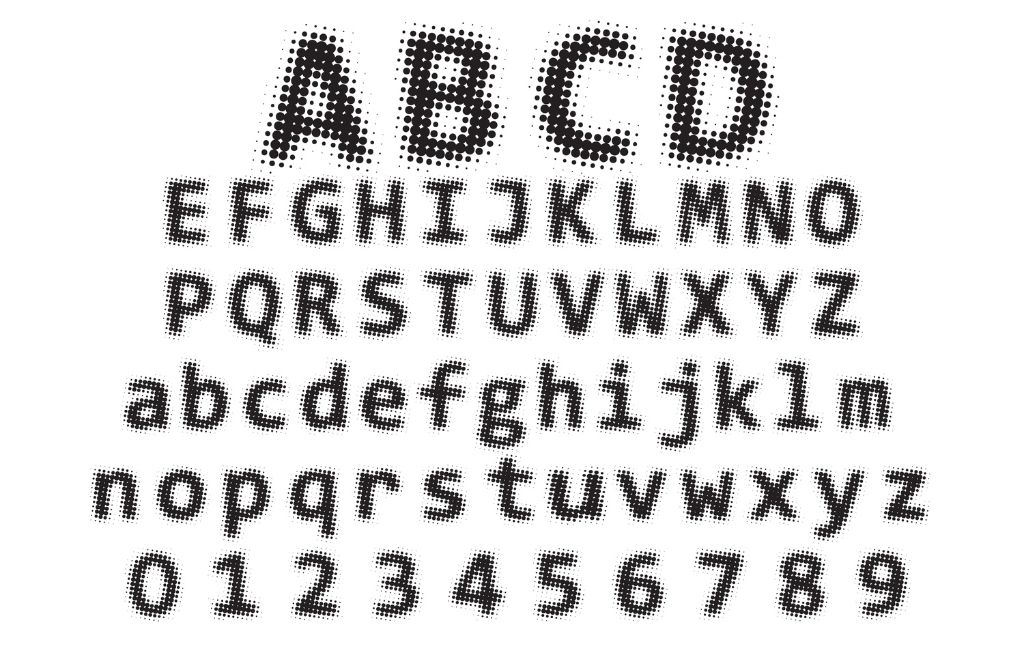
Humans and businesses have gone from shouting, walls, and papyrus to advertise and promote goods and services to screens, scrolling, and prompting.
How did we get to the digital copywriting of today? Copywriting for marketing has been transforming since the very beginning. Generated copy for digital marketing is just our next step.
What is copywriting?
What’s the Difference Between Writing and Copywriting?
I think we can all agree that writing is an art. If that’s true, then we could say that copywriting is the union of art with science. Both writing, and its offspring copywriting are the creative use of text and language to evoke emotions through storytelling. But where writing explores structures, characters, and plot twists, copywriting seeks to quickly influence, persuade, and convert.
In short, a good book entertains, good copy sells.
What is Good Copywriting?
Good copywriting grows business by subtly (or not so subtly) by being persuasive. Copywriting is marketing. It communicates a brand message by getting your attention, it’s clear, readable, brief, consistent, and it’s credible.
Importantly, good professional copywriting makes you want to belong to that product culture, it uses an identifiable brand tone-of-voice that is relatable to the target audience, and it builds trust, so it convinces you to act. It gets the reader to click, sign-up, or buy.
Good copywriting, like good advertising images and assets makes you want to live like or be like the person portrayed just like good advertising images and assets make you want to live like or be like the person portrayed. You identify with the brand, you purchase.
As writing was first developed for business purposes by the Sumerians to keep records of transactions, goods and quantities, so was copywriting developed for business and trade.
When Did the Art and Science of Creative Copywriting Begin?
Copywriting dates back centuries alongside printing, advertising, and marketing. Merchants in ancient times would use persuasive language to sell their goods in the markets, “fresh fish”, “get your fresh fish” “come and get it while it’s fresh.” and town criers would shout out from public squares.
Businesspeople would keep tally of goods sold on clay tablets and advertise goods on the walls or papyrus.
The printing press in the 15th century made communications easier and advertising began to appear in newspapers and handbills “read all about it.”

Copywriting that Sells/The benefits
In the Industrial Revolution in the 19th century, the advancement of technology helped industry grow, factories were built, inventions quintupled or more, mass production became a thing, and basically, more products hit the market. General stores and catalogs took hold and we started to see branded products. There was more to buy and so there was more to sell.
Let’s add that educational reforms increased literacy, there was the steam-powered printing press, urban centers grew, people wanted to be informed so newspapers were taking hold and with it a place to advertise and reach a bigger audience which in turn helped newspapers grow.
It was then that advertising and copywriting began to focus on the “benefits” of mass-produced goods and services and become an art and science.
The Business of Professional Copywriting Companies
In the 20th century marketing became business. Companies and professionals emerged, and brands began to become more strategic and position themselves through personality and lifestyle.
It is widely agreed that, towards the end of the century, the first known professional copywriter John E. Powers changed the writing style in ads from hyperbolic and wordy to an easy-to-read, clear and direct.
The first advertising agency Volney B. Palmer was established to sell the newspaper ad spaces, and 20 years later the first full-service advertising and copywriting agency N.W. Ayer & Son. This change made advertising, marketing and copy strategic and copywriting became a key to brand identity and creating memorable campaigns.
When Did Copywriting Become Storytelling?
There is no stopping progress and transformation. The rise of radio and then television copywriting expanded to incorporate audio and visual elements. Jingles and sounds became associated with words. Professional copywriters had to think visually and add storytelling in 30-second commercials. The TV helped brands build deeper connections with their buyers as they entered their homes and copywriters had to entertain and emotionally engage their audience.
This led to a boom in advertising, agencies started to specialize, copywriters became scriptwriters, regulations were set for copy and brands became influential. Copywriting was about creating lasting brand recognition and building trust, making products something we identify with on a more personal level.
Great slogans that resonate with consumer needs appear like “A Diamond is Forever” that established, to this day, diamonds as the ultimate symbol of love and commitment, and Disneyland’s “The Happiest Place on Earth” that gives us an immediate feeling of joy.

Copywriting for the Internet that Grabs your (Short) Attention (Span)
This art of persuasion and connecting with audiences was on a roll when copywriting was again revolutionized in the digital age in the late 90s and early 2000s
With the rise of the internet, companies had to significantly change how they reach their customers. Adapting to shorter attention spans, the then new platforms like websites, email, and social media. Copy became shorter, catchier, and more targeted. Websites, email marketing and online ads required a SEO copywriting approach to get noticed.
Tech advances and increased globalization meant you can sell your products overseas more easily. Brands started to translate their websites and materials into foreign languages to enter new markets and sell more products. Cultural relevance and localization by language specialists became an ever more important key to get global customers. Transcreation to adapt the message to local audiences became a necessity for global brands and content creators.
The Move to Content Marketing
In recent years, there’s been a shift to content marketing, where valuable, informative content quickly attracts and engages requiring a more subtle approach to copywriting over the direct selling techniques of the past.
A shift to storytelling humanizes the brand. Content marketing helps increase brand visibility and recognition and demonstrates expertise in an industry or area to position a brand and build brand trust, making brands a lifestyle so customers feel they associate.
Content and information via different and less direct channels wherever target customers are active, including websites, blogs, socials, social shares, sponsored content to make it memorable and guide consumers down the marketing funnel towards a purchase.
Results are no longer just “buy” but “engage”. Content marketing is designed to have a more long-term effect and measured through website traffic, shares, likes, comments, and lead generation and customer retention.
Copywriting for Search Engine Optimization
More online content, more brands competing, more marketing specialists and Google and other search engines becoming a key factor in brands being successful means keyword algorithms and statistical rankings have become of prime importance and writing copy for the online world has become a game of not only storytelling talent but SEO knowledge to make sure pages were visible and calls to action (CTA) clicked to convert.
Marketing teams and copywriters start writing for search engine algorithms and what people are looking for. What we read is stuffed with keywords not necessarily informative or interesting. We’re bombarded with information. Information overload.
What Do we Use Copywriting for Today
Today, humans consume more information and content in a day than we did in a lifetime back in the 70s.
With the need for speed, contents have become a major asset for business/companies – and a major challenge. We are mostly creating contents and copywriting for digital marketing, email marketing, social media, websites and e-commerce so they need to be search optimized. And because they have a short shelf life, as people scroll and scroll looking for a fix, we need to constantly generate new copy. And, we need to manage it…
In walks generative AI.
Can Generated Multilingual Copy be the Solution?
Tools like GPTs can now assist in the copywriting process. We can generate ideas and content at scale. We can generate copy in any language we want. But we’re having a depersonalization of communication moment where we are over relying on GenAI content. A moment where, for example, the usually loquacious Italians are writing emails and LinkedIn posts like American High School student essays (that this writer hopes will pass.)
What we scroll through doesn’t always strike a chord. Personality, context, nuance, personal experience and cultural references that are needed to engage and resonate with an audience to connect, entertain, sell, or convert are often missing. Brand’s distinctive tones of voice have become more generic.
When we get smart, the Google gets smarter loop kicks in and algorithms change, SGE is introduced and AI Overviews are incorporated, crawling our contents and copy for original, useful, quality results that “users” are looking for in turn looping back to the need for quality contents to be relevant, sell, convert.
Good human copywriters need keyword tools, SEO and SGE knowledge, marketing skills, writing for the web know-how, and subject-matter expertise. They must write for search engine algorithms, but they must also write for generative search experience and user experience and blend storytelling to really be convincing. The true art and science of copywriting always rears its pretty head.

So, What is the Future of Copywriting?
94% of the best-performing content of online contents are currently human contents. We can train Artificial Intelligence with our brand vocabulary, tone-of-voice, translation memories and contents to get closer to company branding in a feedback loop.
Human copywriters, language specialists, and subject-matter experts can review and edit contents to add human experience and personality to content to make sure they are quality contents that do what copywriting was after all, promote and sell goods and services
Companies need to hold on to their true brand image, manage the contents and copy, and often copious amounts of multilingual contents, and automate marketing processes to make their original and translated copywriting an asset integrated into their CRM, CMS, and PIM/DAMs, for their websites, socials, and feeds. Art within the Science and art.
To compete worldwide, language, like images is a major brand asset, and copy, translations and language assets need to be integrated into the company’s ecosystem.


